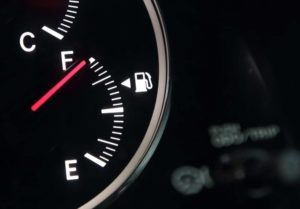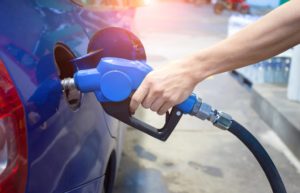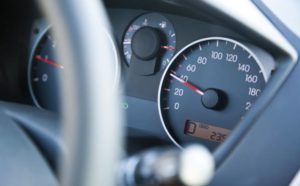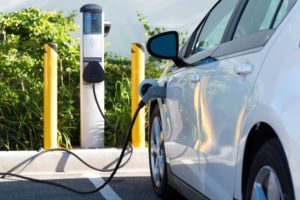If you’re like everyone else, fuel is one of the last things you would like to spend more on. Making your tank go a bit further to save a few dollars is easier than you think. Ensuring your car is in its optimal condition, and following maintenance schedules can boost fuel efficiency by up to 30%.
Without further ado, you will find below the top ways on how you can save hundreds of dollars every year on fuel costs. Plus, some steps can even be beneficial for the environment as you contribute to lowering your greenhouse gas emissions.
1. Use the Correct Fuel
Do you own a modern vehicle? If so, you’re probably running on E10 unleaded. It is a good option when you initially fill up your tank because it is a cheaper alternative to regular petrol. The problem is that E10 is ethanol, which means it has low volatility, especially compared to standard fuel. For that reason, it will appear that you are choosing affordability over efficiency. That is because E10 requires more petrol for you to achieve the same performance.
In other words, you are sacrificing several dollars by thinking you’re saving on fuel. In reality, you use up more petrol, and you end up visiting the service station more than you would want.
The solution is to pick the right type of fuel. You can tell that premium fuel costs more, but you will immediately notice the difference. It lasts longer, and you will even see a slight boost in performance. If you have a European vehicle, you should only use premium fuel; otherwise, you could end up with performance issues if you choose E10 or regular options.
If you hear slight “pings” in the engine, it is a sign that you’re running low on octane fuel before igniting. It can cause premature damage to the engine if you do not change your fuel choice. Make sure that you read the vehicle’s manual to know the exact requirements of your car, especially when it comes to the right fuel. You can usually find this information on the inside of the fuel flap or simply do a quick online search.
2. Check Tyres and Make Sure They’re Properly Inflated
Imagine rolling up a hill with a flat tyre. It’s exhausting. When your tyres are deflated, there is an increase in rolling resistance, which means that your car’s engine will need to work harder than usual. The more work the car exerts, the costlier it gets.
Luckily for you, it’s easy to prevent this type of issue. You only have to regularly check your tyres and make sure they are inflated correctly. That means all four tyres have the highest pressure that the manufacturer recommends.
Under-inflated and deflated tyres cause premature wear. They also decrease fuel economy. Make it a habit to check the tyre inflation level before heading out. The best way to check tyre pressure is when the tyres are cold. That means you have only driven for less than five minutes. You can also do it before you start driving. Reading your car tyre pressure level when the tyres are already warm will only result in incorrect numbers.
While we are on this topic, be reminded that you should also check your wheel alignment. Misaligned wheels will fight the tyres’ grip, increasing the amount of fuel your car uses to propel. If your vehicle seems to pull to one side more often or wear only appears on one side of the tyre, you should get the car’s alignment checked.
If you need help with a flat tyre, we can replace it for you or tow you to the nearest tyre store. We specialise in flat tyre roadside assistance that’s speedy, efficient, dependable and affordable.
3. Consolidate Trips
If you think you are saving more by taking two short trips than a single long drive, you are wrong. You will consume more fuel because your car uses extra gas whenever you crank the engine. Fuel consumption is higher when your engine is cold than warm. Therefore, several short trips after a cold start use twice as much fuel.
If you truly want to save money on petrol, it is time to combine as many trips and errands as you can. In doing so, you also save the amount of time you need to drive. You know what they say: time is money. And the less time you spend on the road, the less fuel you need. That’s why it makes sense to consolidate multiple destinations into one trip.
4. Keep Things Shut
It does feel great when you open the car windows. However, if your goal is to minimise your fuel consumption, you may want to shut your windows more often than not. When the windows are down as you drive, air makes its way into the car. It then creates resistance or drag, which means that your vehicle is forced to work harder.
When the car exerts more effort than average, it drinks more fuel. To counter these effects, you only have to keep the windows rolled up, particularly when you are cruising down the freeway.
Relating to drag, you may have other wind restrictions installed in your car. Check if you have roof racks, which you may not even know about because you never use them. You can remove those racks instead. When left installed, they only contribute to wind resistance and drag. Once again, more fuel is used to push the vehicle and fight through the heavy air.
However, if you do not want to part with your roof racks, you can spread them out. That way, they do not sit too high. You can also utilise a streamlined cargo box, which helps reduce resistance.
One more thing that you need to shut off is your aircon. On a hot day, you surely need your car AC. But, if you’re comfortable with a little bit of heat, you may want to turn it off or simply keep its use to a minimum.
5. Go Slow
Slow and steady always win, especially when it comes to driving. Going for an excessive speed will get you to your destination faster; however, it has many adverse effects on your vehicle. You could be damaging your engine in the long run, causing it to be less efficient.
It is not recommended that you drive at 110km/h or even more, which increases your fuel consumption by more than 15%. If you aim to save on fuel costs, the last thing you want is to drive at high speed. Ideally, you should aim to sit at 100km/h or even under if you are fine with it. In doing so, you take care of your vehicle while also reducing your chances of getting a speeding ticket.
6. Maintain an Even Speed Whenever Possible
Aside from staying at 100km/h or below, you should also drive as smoothly as possible. It can get tempting to accelerate away or tailgate the car that’s been moving so slowly in front of you. But choosing to quicken your pace will burn more fuel. Instead, you should take off as smoothly as you can, especially if you have not been driving from a stop. Then, you hang back from the traffic, which lets you drive more efficiently.
When you tailgate or follow a car too closely, you will be forced to slow down and, later, speed up. This switching from speedy to slow or vice versa will use up more fuel than you can imagine. If you travel further behind, you can evaluate the situation. It is helpful because you would not need to hit the brakes, which, as you may already know, is not fuel-efficient at all.
7. Lose the Weight
Do you still have the golf clubs you used from the 18 holes you played several months ago? Do you have plenty of empty water bottles in the backseat? It’s time to get rid of them. You should not keep anything that you do not use in your vehicle. They only add to the total weight, which means more effort and decreased fuel efficiency.
It is easy to remember. When your car is heavy, the engine requires more power to propel it along. Suppose you can remove at least 20 kilograms from your vehicle. In that case, you can lower petrol consumption by approximately five per cent. Yes, that may not sound like a lot of difference, but it adds up over time.
8. Idling Consumes Fuel
One of the best and easiest ways to save fuel is to turn off the car’s engine. Most of us have the habit of letting it run while we do some quick errands. Some tasks can take longer than we intend them to, which means you leave your car idle for longer.
But while you wait for the stoplight to turn green, you should turn off your engine, especially in a high-trafficked area. If it seems like you will stay on the road unmoving for more than 30 seconds, turn off the engine. This is one reason why newer vehicles have stop/start systems, which are designed to let you turn off/on the car automatically.
Also, there is another thing that you should not do. Don’t warm up your vehicle before you begin driving. This old wives’ tale is entirely unnecessary, not to mention that it wastes fuel.
9. Choose Hybrid or Electric Cars
Electric vehicles (EVs) and hybrid cars are dubbed the new greens on the road. These two types were a welcome addition to the car industry, particularly with the sky-high fuel prices in Australia. Hybrids and EVs give you more benefits if you drive for several kilometres per year.
Compared to conventional cars that turn to diesel or gas for powering their internal combustion engines, a hybrid vehicle has a battery, along with an electric motor. It can still be fuelled like a typical car, but you have the option to recharge and use the battery before switching to petrol. A huge plus is that these cars contribute less pollution while also turning off the engine when the vehicle is stopped. That means it does not go into idle mode, which saves a lot of fuel.
10. Keep Your Car in Its Optimal Shape
Finally, make sure that you keep your car well-maintained. While it is an extra cost every six months or so, this additional expense is worth every penny. You will save a lot on fuel costs while also prolonging the engine’s life. Regular servicing typically includes replacements of spark plugs and fuel and air filters. Proper maintenance ensures that your vehicle will run longer and will stay in its best condition.
Did you run out of fuel and you’re stuck on the road? No problem! We offer a refuelling service that’s fast and friendly. We care about your time and will show up to help you. Contact Fast Sydney Towing on (02) 8599 4536. We’re open 24 hours every day of the week, so you can trust that we will get to you in no time at any time.




